
Popcorn is a global snack that is very popular due to its ease of preparation and its great crunch sound. However, concerning younger kids, especially toddlers three years old or so, the question that comes to mind is this: Could it be a choking hazard because of its size and texture? This article deals with this problem thoroughly by considering the structural properties of corn puffs, the anatomical development of infants, and the possible dangers of offering such a snack to small children. This short article intends to help parents and caregivers choose a diet for their toddlers by exploring guidelines for pediatric health, the statistics of choking incidents, and recommendations from experts.
Why is popcorn considered a choking hazard for young children?
The unique physical properties of the snack and the anatomy of the toddlers contribute to a choking hazard. The unpopped and the popped popcorn are shaped small and irregularly with a hard structure, which poses a problem in chewing and fully masticating them with the underdeveloped molar of the toddlers. In addition, toddlers have a small and ineffective airway; anything that partially covers it, no matter how minor, will even get stuck, whereby airflow is obstructed completely. Some pediatric health experts recommend that children under the age of four abstain from swallowing popcorn to prevent such cases of choking.
Understanding the anatomy of a child's airway
The airway structure of a young child helps explain the risks associated with eating some foods, such as popcorn. The airway of a toddler is smaller than an older child or an adult, such that in a child under three years of age, the trachea diameter is 4-6 mm. It follows that even small airway obstruction at this size would drastically affect airflow. In addition, the larynx in small children is also higher up in the neck, as a result of which breastfeeding may be easier but puts them at a higher chance of choking on intake of poorly chewed food.
Moreover, children of such age also do not have sufficient molar strength to grind hard or irregular food, leaving large chunks of food that are not thoroughly chewed and can be easily inhaled rather than swallowed. There is also the issue of underdeveloped cough reflexes, which put a toddler at a greater risk of difficulty clearing the airways. Because of these physiological-genetic factors, alternatives include focusing more on the airway side to avoid intake of small, irregular, or complex objects like popcorn kernels, which are comparatively similar in size or more significant than the necessary airway dimension.
The risks associated with unpopped kernels
Boys, girls, and young children are at risk of choking on unpopped popcorn as they are small, complex, and irregular in shape. Such kernels have a diameter measuring 5-7 mm, so those kernels have a high chance of blocking the airways of toddlers and small children. A part of it could be that those kernels are so complex that they cannot be crushed, making it even harder for such kids to clear their airways if they swallow those sighing kernels. I view this threat as young kids having structural features, such as molars that are yet to develop, and smaller airways, which tend to make ingesting such kernels troubling. In short, unpopped kernels need to be outlawed from their reach, and a restriction on serving them food that is of a particular age group and isn’t above required to be installed.
How popcorn can lead to choking or aspiration
Due to their low density and irregular geometrical shape, popcorn pieces are often inhaled, especially when chewing them rapidly or without. This dramatically increases the chances of pieces choking the airways, particularly for young kids with undeveloped chewing skills and narrow air passages. Additionally, hated partially formed kernels vent offenders and sharper-ended hulls, which can easily fall inside the trachea. These facts show how much young children need to be watched while consuming those babies and how steadily every puff should be taken. Otherwise, pulmonary aspiration would result in severe consequences.
At what age can children safely eat popcorn?
Due to their still-developing chewing and swallowing skills and narrow airways that increase the likelihood of choking, children under 4 are generally not encouraged to eat popcorn. Pediatric professionals thus recommend not introducing popcorn to a child before he or she reaches the age of four and has developed the necessary chewing capability. But even then, monitoring while eating is recommended to encourage proper eating habits.
Pediatric recommendations for popcorn consumption
In the pediatric population, it is best to introduce popcorn to children after age 4. This is because at less than this age, their coordination of chewing and swallowing is not fully developed, which makes popcorn a choking hazard. Popcorn must also be served in small amounts to children above four but must be seated while eating as there is a greater chance of choking while eating while moving. Furthermore, caregivers must constantly supervise children and prompt them to chew their food carefully. Such measures lower the risks and promote sound eating habits.
Developmental milestones related to chewing and swallowing
The oral-motor control in children develops gradually along with their other motor and neurological development. The ability to control pureed complement food by moving it with the tongue and initiating essential chewing begins to appear in infants, usually around six months. Oral motor control improves even further between 9 and 12 months, enabling them to manage thicker textures or finger foods quite suspensefully. Parents may also notice rotary chewing movements around this time, which aid in developing oral musculature and textures that help achieve first chew movements in children, which appear around one and a half to two years old. From the age of three to four years, with the development of better oral motor coordination skills and molar eruption, children are capable of chewing and swallowing more brutal food, such as raw vegetables or popcorn.
Pediatrics training based on various factors will help us determine safe periods to introduce food. As an example, choking risk prevention recommendations indicate that a size of food not exceeding 5 millimeters should be given to toddlers to limit such risks. Moreover, performing a self-supporting sitting position, a skill known to develop between 6 and 8 months, is essential for safe swallowing techniques. Because of the choking risk, it is recommended that caregivers assess the child’s growth and development as well as personal readiness before presenting new or challenging foods.
What are the signs of choking in a 3-year-old?
Regarding a 3-year-old, parents must take quick action after a choking situation arises. One of the severe symptoms is pronunciation; any type of sound or voice is impossible to utter due to airway restriction. The kid might show signs of neck and face pain, even breath loss. Cyanosis is the first sign that detects anaphylaxis, characterized by blueness around the mouth, face, eyes, and fingernails. Other signs are ineffective coughing, breathing effort without sound, and wheezing, which indicates a restraining of airflow, whether partial or complete. To prevent serious outcomes, observations should be made for any of these symptoms so that the necessary, timely steps can be taken.
Recognizing choking symptoms in toddlers
In my experience watching toddlers who might choke, I focus on the following criterion: whether breathing has become difficult, an inability to speak or cry, or an ineffective cough. Additionally, I consider anything unusual, such as my toddler making a high-pitched sound or trying to breathe and suddenly becoming quiet. More importantly, if I see my child covering their neck, looking distressed, or cyanosis developing on the lips or the surrounding area of the face, I intervene right away as, in my estimation, this situation has the potential to block the airway entirely and needs attention now.
When to seek immediate medical attention
Should my child display any signs of complete airway obstruction, such as an inability to cry or breathe, I would ring up the nearest hospital as a matter of urgency. Mainly if he turns blue, passes out, or uncharacteristically becomes quiet. In instances where my child is gagging, yet there is still the possibility of weak coughs and shallow breaths, then notice poor recovery or the situation deteriorates, then I call for health emergencies. Keeping track of the oximeter readings is also essential, as less than ninety percent indicates medical assistance is required, along with shallow inwards breathing between the ribs or nose. Such symptoms warrant a visit to the medical professional, or serious health complications may arise.
Are there safer alternatives to popcorn for toddlers?
Yes, many other alternatives are as safe as popcorn, which are age-friendly snacks for toddlers without worrying about choking. Soft varieties like sliced bananas, steamed vegetables like carrots and zucchini sticks, or soft cheese cubes would be great. Well-cooked pasta shapes or children’s puffed snacks crafted solely for toddlers would do the job perfectly for crisp snacks. Always keep in mind that any snack should be suitable for the child’s age, cut into tiny-sized pieces, and should be adjoined by a guardian during the eating process to avoid any chances of choking.
Nutritious snack options with lower choking risks
There is no need to worry; if you want to give your young one healthy alternatives they can chew on without choking, go for the soft and easily swallowable foods. For instance, mashed bananas and avocados are good alternatives as they contain a high nutritional value and are safe from choking hazards. Vegetables can also be included in the child’s diet; steamed vegetables, for instance, broccoli florets and sweet potato cut into small pieces, can be beneficial, provided they are consumed while appropriately prepared. Moreover, yogurt and smooth nut butter applied lightly on soft bread can make for good snacks. Supervising while the child is eating is crucial, as is cutting the food into tiny pieces to remove the chance of choking and adding depth to the monitoring.
How to prepare foods to minimize choking hazards
Seeing that foods are prepared without exposing anyone to choking risks, I try to ensure that all items are cut into small pieces, not more significant than half an inch. Grapes or cherry tomatoes, for instance, are always sliced in half, while hard vegetables are steam-cooked to make them softer. Some kinds of food, such as whole nuts, popcorn, or big pieces of meat, must be avoided because they are round, sticky, or stern. Children approaching age three would require nut butter to be spread thinly, and the bread must be soft. One should keep on watching children during meal times to manage any problems at the time they break out.
What other foods pose choking risks for young children?
Because of their size, shape, and texture, some foods can serve as potential choking hazards for children, such as uncooked vegetables like carrots, hard-boiled sweets, and sausages, especially when not diced into smaller round shapes, whole blocks of nuts, seeds, or even large sections of meat or cheese. Sticky food like peanut butter in large quantities, gum, or even marshmallows can block the airway. Other foods, such as circular fruits like grapes, cherries, or blueberries, can still pose a choking hazard unless such fruits are diced into smaller pieces. Preparing some foods or avoiding some foods is critical when it comes to reducing risk.
Common Food-Choking Hazards for Babies and Toddlers
Choking is a significant concern for babies and toddlers due to their underdeveloped chewing and swallowing abilities. Typical food choking hazards are small, round, slippery, or hard items that can quickly become lodged in their airways. Below is a compiled list of common choking hazards :
- Hard and Round Foods
Due to their size and texture, foods such as whole grapes, cherry tomatoes, and hard candies pose a high risk. These items should be cut into small, bite-sized pieces (e.g., grapes should be quartered) or avoided entirely to mitigate risk.
- Sticky and Chewy Foods
Sticky foods like peanut butter in large globs, marshmallows, or chewy candies can block the airway if not adequately broken down. Spreading thin layers of peanut butter or offering alternative snack options is recommended.
- Nuts and Seeds
Whole nuts, such as almonds or cashews, and seeds can quickly get stuck in a child's small airway. Nut butter or finely ground powders are safer alternatives for children under 4.
- Hard Vegetables and Fruits
Raw carrots, apples, or firm fruits can be challenging to chew and swallow. Before serving, these should be cooked until soft or shredded into small, manageable pieces.
- Popcorn and Snack Foods
Popcorn, chips, and pretzels are dry and irregularly shaped, creating a potential choking hazard. These should be avoided entirely for children under the age of 4.
- Hot Dogs and Sausages
Due to their tubular shape, these foods are a choking hazard. For safety, they should be sliced lengthwise into thin strips or diced into tiny pieces.
Technical Parameters for Food Safety
- Age-Specific Guidelines
Foods should be modified based on the child's developmental stage:
- Under 12 months: Pureed or mashed foods are recommended.
- 12-24 months: Small, soft pieces as chewing skills develop.
- 24+ months: Monitor closely; introduce firmer textures gradually.
- Size Recommendations
To minimize choking risks for toddlers, it is advised to cut all food into pieces smaller than ½ inches (approximately 1.27 cm).
Adhering to these precautions and supervision practices during mealtime can significantly reduce the risk of choking in babies and toddlers. Parents and caregivers should also familiarize themselves with first-aid techniques, such as infant and child CPR, to act quickly in emergencies.
Guidelines for Preparing High-Risk Foods Safely
Using high-risk food, for instance, raw meat, poultry, fish, dairy products, and cooked rice or pasta, I follow appropriate measures to prevent the occurrence of food sex. I ensure it gets done correctly and store it at an adequate and proper temperature. For refrigeration, it needs to be below 40° f or 4 ° c, and for freezing below 0° f or -18° c. While working, especially during preparation, I often keep my area sterile by washing all the surfaces, utensils, and my hands.
The food can be considered safe to eat once the internal temperature reaches the required mark; it is notably more applicable for poultry since it has to get the highest mark of 165° f or 74 ° c, while seafood and beef cuts take a lower temperature of 145° f or 63 ° c. Grinding meat is 160° f or 71 ° c. Use separate chopping boards to cut raw items; those ready for food avoid cross-contamination. Any food that stays exposed without being refrigerated for more than two hours or one hour if the weather is above 90° f or 32° c is in a danger zone and should, therefore, be thrown away as it can cause germs to breed.
References
Popcorn Food ChildFrequently Asked Questions (FAQ)
Q: Is popcorn safe for 3-year-olds to eat?
A: Popcorn is generally not recommended for children under 4 years old due to choking risks. The American Academy of Pediatrics advises against giving popcorn to toddlers, as they may not be able to chew it properly or could inhale unpopped kernels.Q: What are some popcorn alternatives for toddlers?
A: Safe alternatives to popcorn for toddlers include puffed rice cakes, soft fruits cut into small pieces, yogurt-covered raisins, and age-appropriate snack puffs. These options are less likely to pose a choking hazard while providing a satisfying snack experience.Q: Why is popcorn considered a choking hazard for young children?
A: Popcorn is a choking hazard because its shape and texture can easily block a child's airway. Unpopped kernels are particularly dangerous, as they are complex and can be accidentally inhaled. Additionally, toddlers may not be able to chew popcorn thoroughly before swallowing.Q: At what age can children safely eat popcorn?
A: Most experts, including the American Academy of Pediatrics, recommend waiting until a child is 4 years old before introducing popcorn. Children typically have better chewing abilities and a reduced risk of choking on foods like popcorn by this age.Q: What other foods should toddlers avoid due to choking risks?
A: Besides popcorn, toddlers should avoid whole grapes, hot dogs, hard candies, raw vegetables, and nuts. Due to their size, shape, or texture, these foods pose a high risk of choking for children under 4 years old.Q: What should I do if my toddler accidentally eats popcorn?
A: If your toddler accidentally eats popcorn, watch them closely for signs of choking, such as coughing, gagging, or difficulty breathing. If they show any distress, perform appropriate first aid immediately. If they seem fine, continue to monitor them and contact your pediatrician if you have any concerns.Q: How can I teach my child about food safety and choking hazards?
A: Educate your child about safe eating habits by explaining the importance of chewing food thoroughly and not putting too much in their mouth at once. Demonstrate proper chewing and swallowing techniques and supervise mealtimes. As they grow, gradually introduce more challenging foods while teaching them about potential risks.Q: Are there any safe ways for toddlers to enjoy the taste of popcorn?
A: While it's best to avoid giving actual popcorn to toddlers, you may consider popcorn-flavored snacks designed for young children. These products are usually made from safer ingredients and dissolve quickly in the mouth, reducing the risk of choking while providing a similar taste experience.

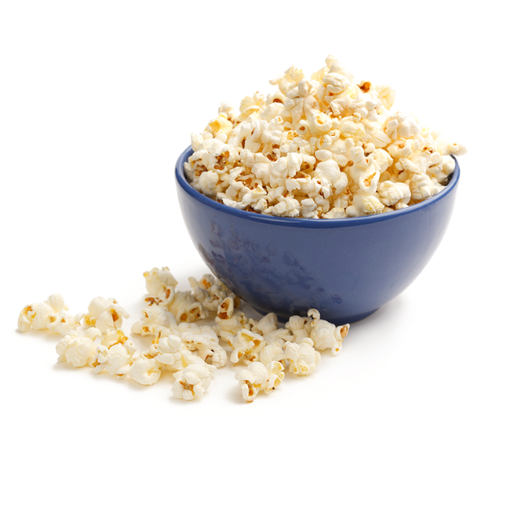
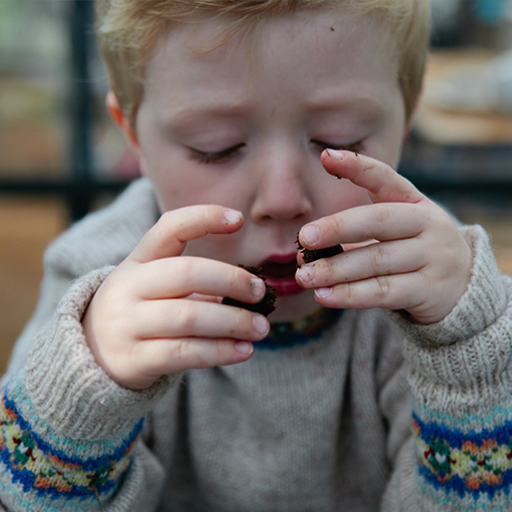
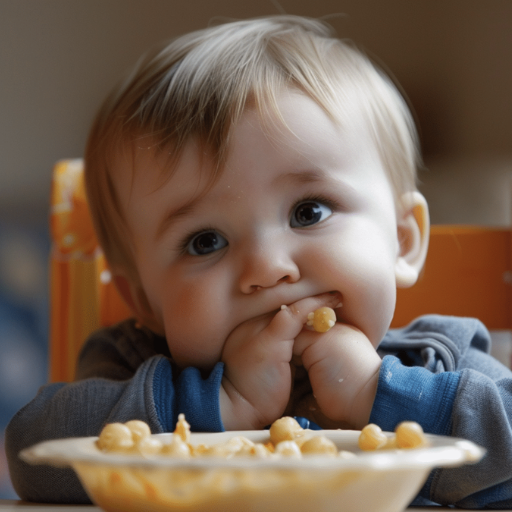
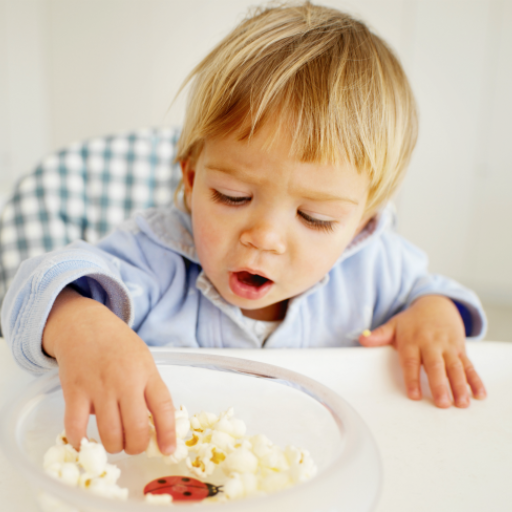




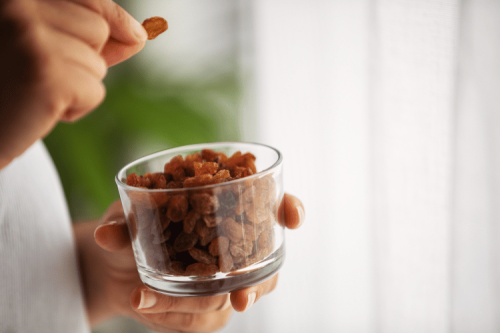

 Login with Google
Login with Google Login with Facebook
Login with Facebook